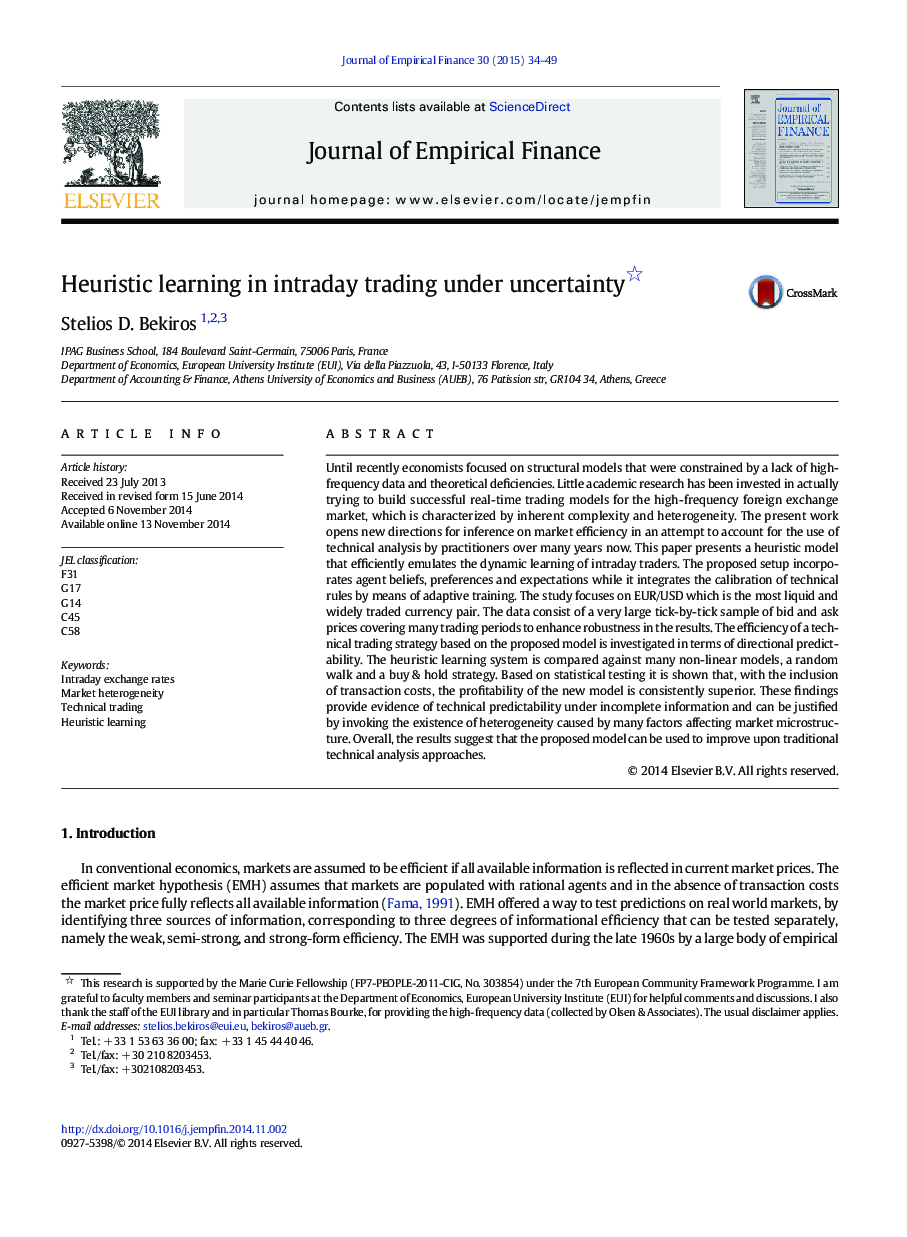| Article ID | Journal | Published Year | Pages | File Type |
|---|---|---|---|---|
| 958737 | Journal of Empirical Finance | 2015 | 16 Pages |
•Little academic research exists in real-time trading for high-frequency FX rates.•Model incorporates beliefs, preferences & expectations via adaptive training.•Heuristic adaptive learning system is compared against many models.•Including transaction costs the profitability of the model is consistently superior.•Findings provide evidence of technical predictability under incomplete information.
Until recently economists focused on structural models that were constrained by a lack of high-frequency data and theoretical deficiencies. Little academic research has been invested in actually trying to build successful real-time trading models for the high-frequency foreign exchange market, which is characterized by inherent complexity and heterogeneity. The present work opens new directions for inference on market efficiency in an attempt to account for the use of technical analysis by practitioners over many years now. This paper presents a heuristic model that efficiently emulates the dynamic learning of intraday traders. The proposed setup incorporates agent beliefs, preferences and expectations while it integrates the calibration of technical rules by means of adaptive training. The study focuses on EUR/USD which is the most liquid and widely traded currency pair. The data consist of a very large tick-by-tick sample of bid and ask prices covering many trading periods to enhance robustness in the results. The efficiency of a technical trading strategy based on the proposed model is investigated in terms of directional predictability. The heuristic learning system is compared against many non-linear models, a random walk and a buy & hold strategy. Based on statistical testing it is shown that, with the inclusion of transaction costs, the profitability of the new model is consistently superior. These findings provide evidence of technical predictability under incomplete information and can be justified by invoking the existence of heterogeneity caused by many factors affecting market microstructure. Overall, the results suggest that the proposed model can be used to improve upon traditional technical analysis approaches.
